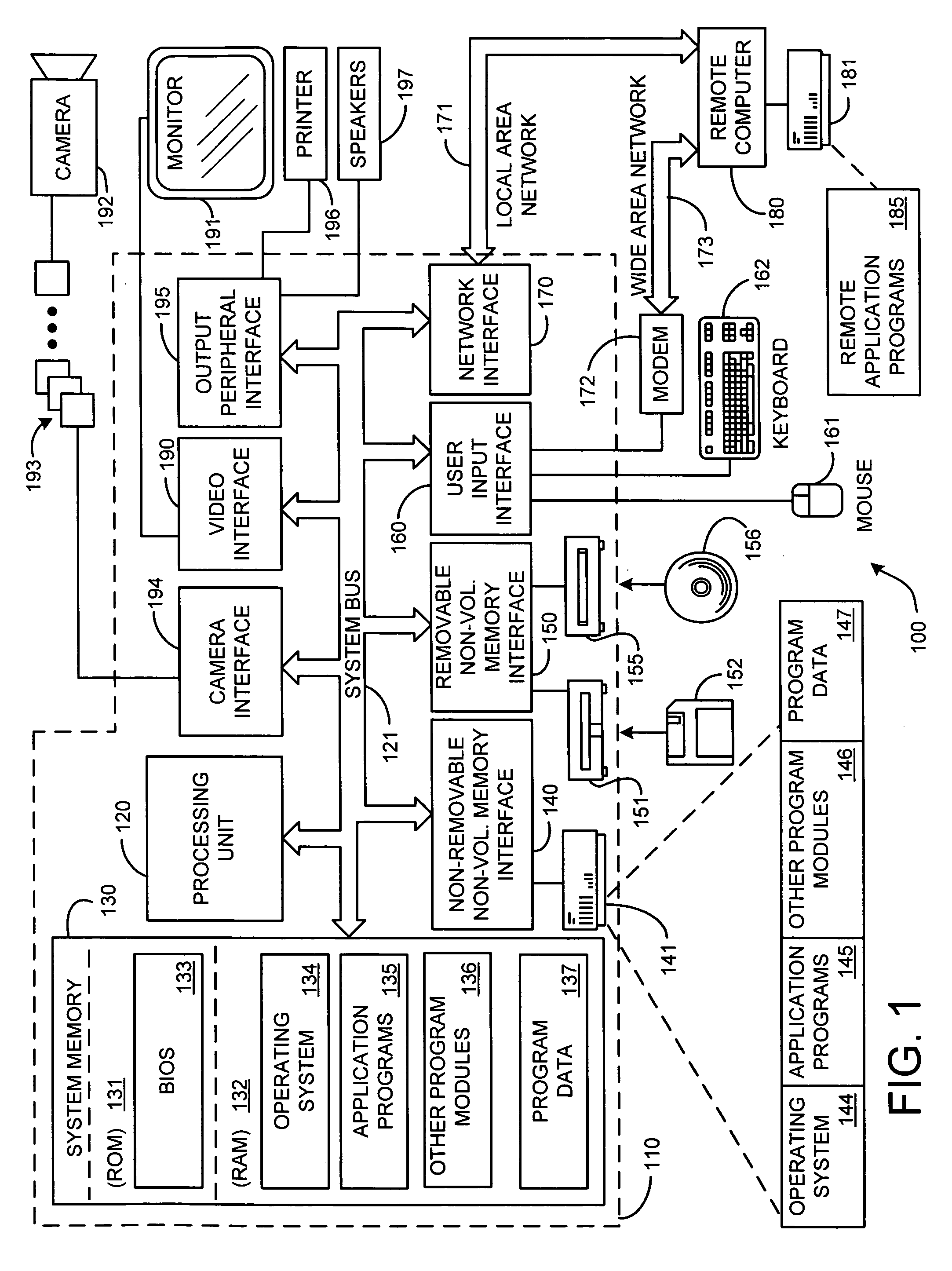Probabilistic exemplar-based pattern tracking
a probability-based pattern and pattern technology, applied in image analysis, instruments, computing, etc., can solve the problems of unsatisfactory to have to assume a known parameterization of the intensity function on the patch, background clutter and simulated occlusion threaten to distract tracking without a reasonable dynamic model and a good likelihood function, and mouth makes tracking difficul
- Summary
- Abstract
- Description
- Claims
- Application Information
AI Technical Summary
Benefits of technology
Problems solved by technology
Method used
Image
Examples
working example
4.0 WORKING EXAMPLE
[0120] In a working example of the present invention, the program modules described in Section 2.6 with reference to FIG. 2 in view of the detailed description provided in Section 3 were employed to track patterns using a probabilistic exemplar-based tracking process. Details of a group of experiments illustrating the success of the probabilistic exemplar-based tracking system and method of the present invention are provided in the following section. Tracking using both contour-based exemplars and image patch exemplars was examined.
4.1 Results:
[0121] In order to demonstrate the necessity for, and applicability of, the M2 model, tracking experiments were performed in two separate domains. In the first case, walking people were tracked using contour edges. In this case, background clutter and simulated occlusion threatened to distract tracking without a reasonable dynamic model and a good likelihood function. In the second case, a person's mouth position and orie...
PUM
 Login to View More
Login to View More Abstract
Description
Claims
Application Information
 Login to View More
Login to View More - R&D
- Intellectual Property
- Life Sciences
- Materials
- Tech Scout
- Unparalleled Data Quality
- Higher Quality Content
- 60% Fewer Hallucinations
Browse by: Latest US Patents, China's latest patents, Technical Efficacy Thesaurus, Application Domain, Technology Topic, Popular Technical Reports.
© 2025 PatSnap. All rights reserved.Legal|Privacy policy|Modern Slavery Act Transparency Statement|Sitemap|About US| Contact US: help@patsnap.com



